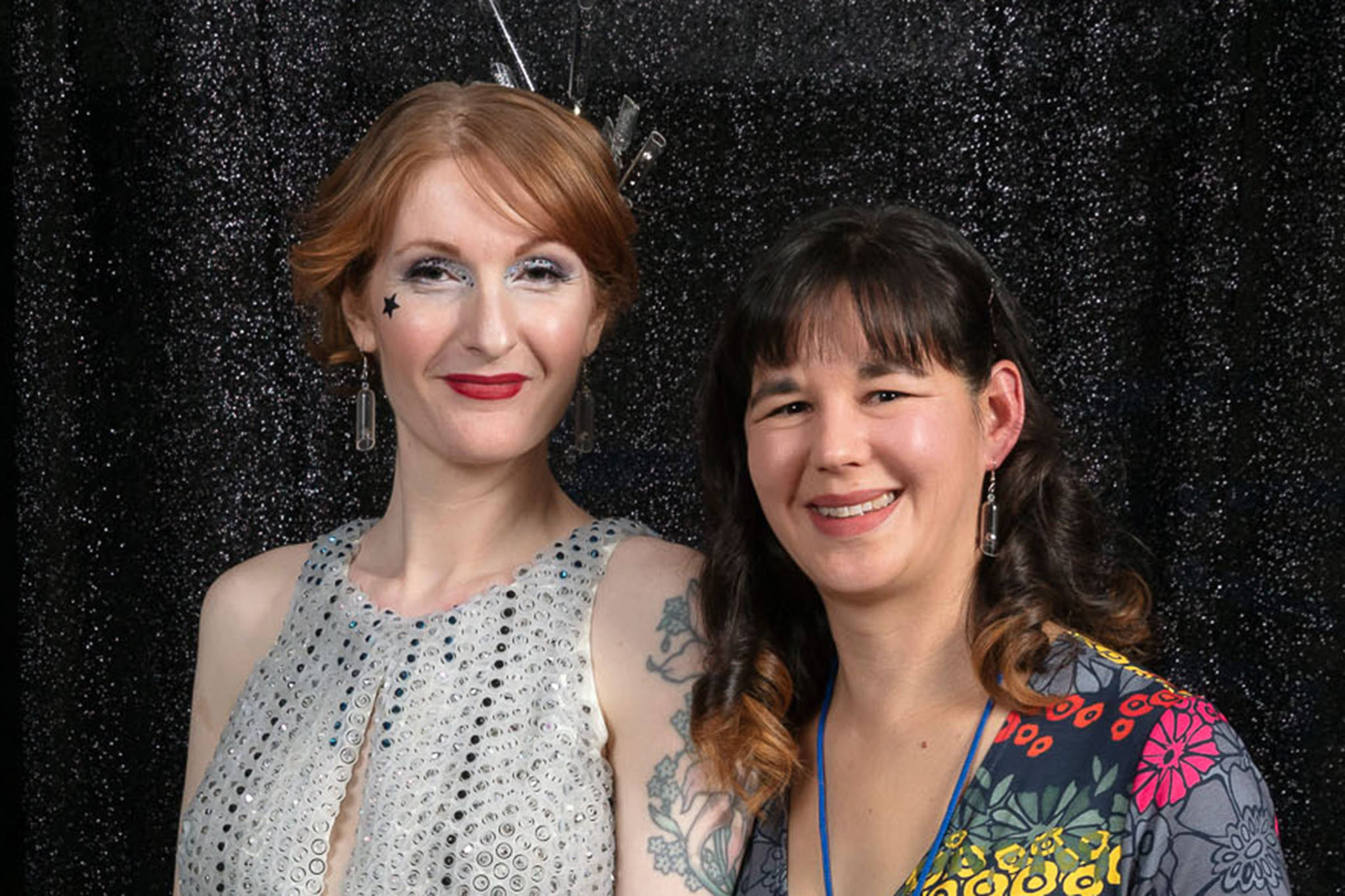Michelle Morris’ path to the top juried prize in Juneau’s annual fashion extravaganza began in the audience.
Morris was a Wearable Art spectator long before she made anything for the annual fashion show and before she was the jurors’ first-place selection in Wearable Art 2020: Joie de Vivre.
“I used to watch the show,” Morris said. “I just loved the idea of creating things out of everyday materials and creating something much more interesting.”
[Here are the winners from Wearable Art 2020]
When Morris found herself with extra downtime in the winter months seven years ago, she took the plunge and created a piece for Wearable Art. She’s now made pieces for each of the past eight events. Along the way, she’s twice won Wearable Art’s people’s choice award — now named the Sybil Davis Award — and placed in the jurors’ selections five times. This year was her first-ever first-place finish.
“I was happy,” Morris said. “I got to be in the audience this year when they announced, and so that was kind of exciting.”
In past years, Morris has modeled her work, but this year she said she wanted a highly choreographed dance number.
“And I am not a trained dancer,” Morris said.
So “Sample Delight” was modeled by Melissa Patterson, who had helped Morris choreograph in past years.
The piece, which made use of sample tubes, caps and tubes that previously held pre-rolled joints, was also selected to be exhibited at the Trend Alaska Show in October in Anchorage.
Morris took some time to talk to the Capital City about the making of her award-winning piece and what it takes to participate in Wearable Art year after year.
Tell me a bit about the inspiration for the piece. I saw in its description it said ’20s inspired, so I have to imagine that was a nod to the new year we’re in?
Yeah, and it was just once I started looking at the various bins of things I have in the garage that I keep, I’d been hanging on to these sample tubes for a couple of years, and I decided this was the year to work on it. I always start in the summertime playing around with the pieces that I have. I like the sound. I always like pieces with sound. I wanted to do something I liked. It was shiny, it clicked and made noises and hopefully it would bring a smile to the audience and other artists.
Where’d you get all of the tubes from?
My husband works at the fish pathology lab for the Department of Fish and Game, so all the small vials and tubes and caps I got from him. For the wrap that I did that uses pre-roll tubes from the dispensary, I got those from Green Elephant.
So you’d started collecting the tubes before you knew what the project would be?
They go through like 9,000 samples per year using those tubes. I always need something that has a lot. When people offer me things, I always ask how many do you have? I don’t need 20 of one thing, I need thousands of one thing. I’d been holding onto those for a couple of years.
How long did it take to make the piece?
I would say a single row around the piece takes an hour, so multiply it out all the way up. There were definitely some very long days on the weekends working on it.
Is there anything about your piece people might be surprised to learn?
People were surprised to learn the top is all caps. Unless you look at it up close and see it in detail, I actually had a lot of people thinking that I had like a sequins fabric for the top, and that I only sewed the bottom with the tubes. No, the top is all caps. Inverted caps with beads in them. Hand sewn.
Are you planning to participate next year?
Probably. I always say I’m going to take a break, but then the gears start turning, and I start wanting to create something, but I’ve got to give myself a few months off. I wait until summer until I really start brainstorming.
• Contact reporter Ben Hohenstatt at (907)523-2243 or bhohenstatt@juneauempire.com. Follow him on Twitter at @BenHohenstatt.

